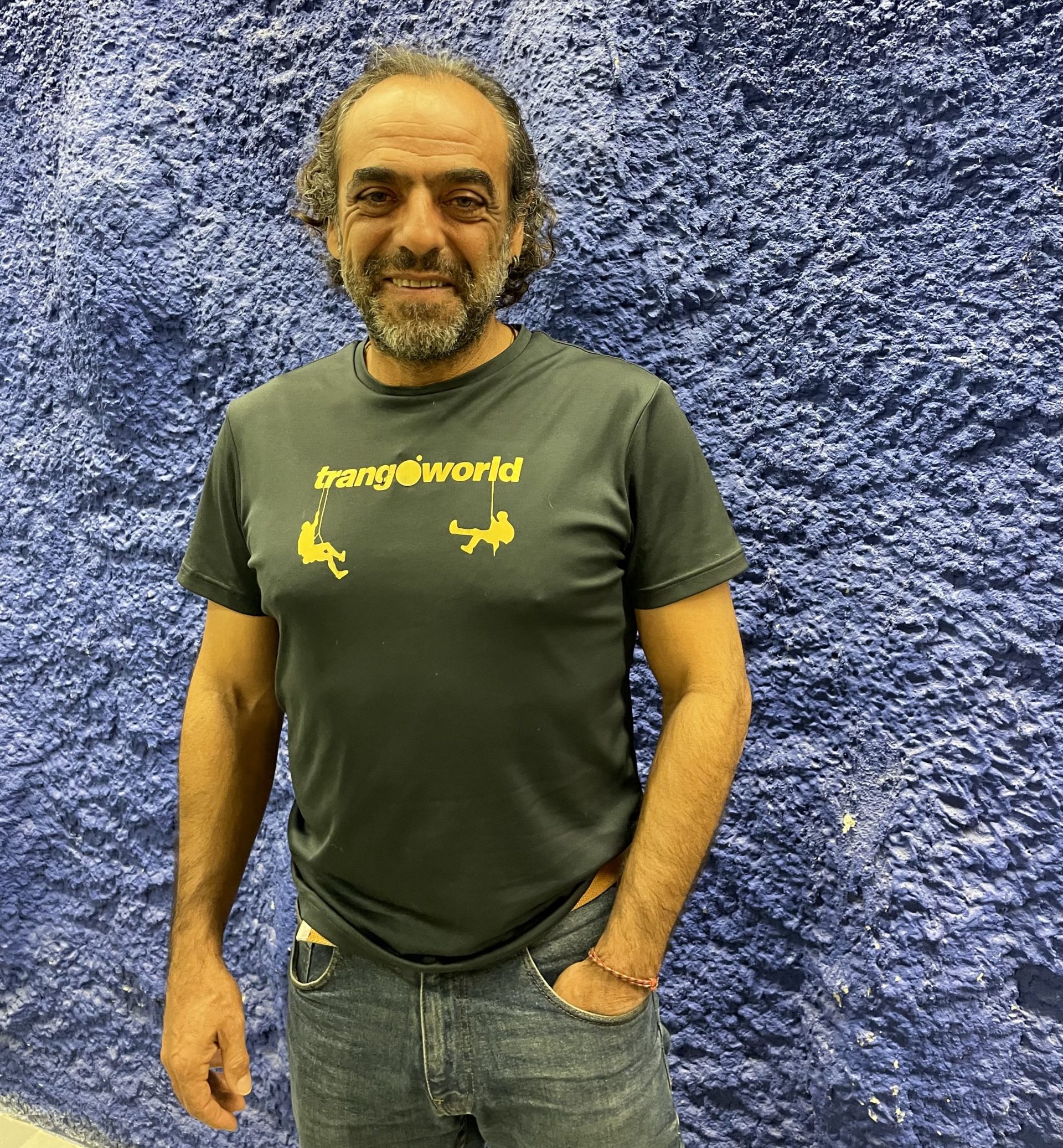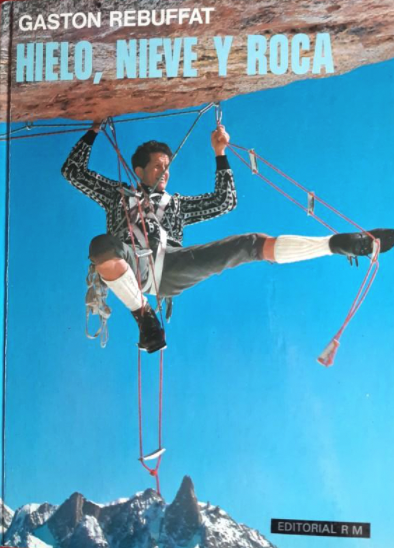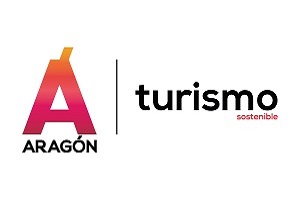Jaca is your hometown. Is that where your passion for mountaineering began?
I grew up in Jaca but only until I was eight years old when we came to Zaragoza. But since my grandmother was still in Jaca, we spent all the summer, Easter and Christmas vacations there. The passion for the mountains began in the camps but the passion for climbing began in Jaca in a bookstore one Easter morning in 1980 when I saw a book by a French mountaineer, Ice, Snow and Rock by Gaston Rebuffat. The cover is spectacular because there is a mountaineer hanging from a roof in the Alps and I bought the book because it caught my attention. I flipped through it and realized that what I really wanted to do was not to walk in the mountains but to climb mountains, which are two quite different things. That same month of May I became a member of Montañeros de Aragón and I signed up for some climbing courses and got to know the techniques and people with whom I started to go out every weekend, since I was 15 years old, to Morata, to Riglos.
You always describe yourself as a proud Aragonese, has that always been your flag?
Yes, the truth is that for a series of professional reasons linked to the mountains I have traveled practically all over the world. And you realize that we have a territory that has nothing to envy to any other. If I had to travel all over the world and I had to choose a place to live, I would live in Aragon, I have no doubt about that. We have everything: we have landscape, we have good people, space, mountains, rivers… being Aragonese is a source of pride for me, especially being a country of mountains. Aragon is a mountainous territory, within a mountainous country like Spain, which is the second most mountainous in Europe. So I am very proud to have the mountains so close at hand and to be from this land.
From the Pyrenees to Teruel? Which mountains do you choose?
If I had to stay with any of the mountains of our land I would say that there is one that is spectacular that is in the French part of the Pyrenees, but well, the Pyrenees is a geomorphological unit that does not understand borders. It is the Midi d’Ossau. It is the best area in the whole Pyrenees for climbing. Then as a high mountain I would choose the Posets, which is a solitary mountain as I like, and it is a valley, Gistaín, which has been little transformed and you feel the same as when I was 12 years old and I like that. I would also choose the Tozal de Mallo, that 400 meters high wall of Ordesa where we have climbed since we were kids and where we live extraordinary climbing adventures. Those are the three icons of the Pyrenees and where I have surely gone the most.

You talk about the transformation of the mountains, do you think they have been transformed too much in Aragon?
We are still lucky that we still have a little transformed environment. There are many places in the Alps where the transformation has been radical. Here in Aragon they have been transformed in part, also the glaciers have been less and that has transformed the appearance of the mountain, but neither have they been humanized much more, nor have large infrastructures been built. Let’s say that they have changed a little but still have extraordinary natural values and if you want to be alone you can find places to thousands if you move away a little from the most classic which is the Ordesa Valley and the Aneto.
But they are places that put us on the map.
Yes, and it is very normal. That’s why I’m not very fond of regulations. In the times we live in we tend to try to regulate everything. Soon we will have to try to go out on the street with a check manual like the one for airplanes. I believe that there are places that attract people, and that will always happen, such as Ordesa because it is a National Park and Aneto because it is the highest mountain. There will always be more people than in other places. That is what happens in the Himalayas with Everest, it always attracts more people because it is the roof of the world, while there are other Himalayan mountains like Annapurna or K2 where there are few people. That is an intrinsic evil of the human being: we are attracted by the same things and people are free to go to the mountain they want when they want.
K2 was your first eight-thousander. What do you remember about that expedition?
It was in 2001. I already had experience of eight-thousanders, I had not climbed any summit but I had been to Kanchenjunga, which is the third highest mountain on earth, to Everest on the north face, to Broad Peak and the first summit was K2. I remember it very well because it was the perfect expedition and from then on there have always been some problems. We were four friends from here who knew each other very well, it was a difficult mountain, we were practically alone, we had to work hard but in the end we got the reward of a mythical summit. I think K2 is the most beautiful mountain that exists among all the mountains.
It has given you a lot of joys but also some sorrow…
That’s a lot of years. To climb the 14 eight-thousanders in the end there have been about 30 expeditions, more than a thousand days living on the glaciers or on the ice. There are good moments and bad moments… it is inevitable. I have lost people very close to me, there are moments of joy, satisfaction and collaboration… the balance continues to compensate because otherwise I would not go back there. They are bad moments that do not tarnish the great moments.
What is the situation of Aragonese mountaineering?
I think that Aragonese mountaineering is currently very well endowed in terms of rock climbing and sport climbing, also in terms of difficulty… In terms of climbing in big mountains it is a bit lame; I think that there is not much generational change, perhaps I am one of the last of a generation that did not mind spending two months away from home in the mountains, spending a bit more difficult conditions and I think that now young people are not in the mood, they want things more immediately. We are in a period of immediacy, I want to do things quickly, I have no patience to be training, move and then spend hardship. Fortunately I have an Aragonese teammate who is young and this year I have been able to go out with him and I see that he has what it takes and can do things in the world of the high mountain, is Andrés Vilalta, from Monzón. He is extraordinary and one of the few relays, because it is not easy to find willing people.
Has immediacy replaced the culture of effort?
In the conferences I give to younger people I realize that they don’t understand the culture of effort, of achieving very difficult challenges that require a lot of preparation. I have always felt comfortable in the effort, in the effort to achieve a difficult goal, I have enjoyed that time you are on the way. It has not cost me to train, it has not cost me to be cold because deep down it was what I wanted and the satisfaction of achieving it filled me completely. Now that has changed and people want everything faster. People no longer read and do not consume long videos, everything has to be short and that has also been transferred to the effort. People who have never run before want to run a 5K the next month. Everything has to be fast and that is to the detriment of people who want to go to the high mountains because there are no shortcuts, it is a long way and with hard conditions.
Nowadays young people don’t read and you started in the high mountains reading. What is the book that has accompanied your life?
I haven’t read many mountain books because being so immersed and spending almost six months a year in the mountains, I feel like disconnecting. The book Ice, Snow and Rock by Gaston Rebuffat marked me because it talks about dreaming, the effort to go little by little… It’s a book of the old days, which seeks spiritual technique and I’m from that old school. I have always been guided by sensations, experiences and dreams. I come from a time of dreamers of the mountains, we dreamed of putting our feet where one day we put our eyes as Gaston Rebuffat said.
We are doing this interview at the IAACC Pablo Serrano in Zaragoza. What is the relationship between sport and art?
Art and sport are related because, if you look, the mountains we like to climb the most and the ones that attract us the most are the most beautiful. In the end, what a climber is looking for are those pure, beautiful lines, those sharp edges, vertical walls… what attracts us most is not only the difficulty, but also the beauty of that mountain. There is a lot of art in the mountains and their environments, the glaciers, the forests, the valleys… they are plastically very beautiful. The views from the top is something very beautiful and you would stay there looking at it for hours. The beauty of the mountains is something not to be despised. Beautiful and attractive lines to walk on, that’s what a climber is looking for.
You are immersed in Descubre tu Tierra, a project with the bullfighter Imanol Sanchez that wants to spread the noble foods of Aragon and our land and our people, in short.
Discover your land is a specific program for social networks that in an entertaining way and being the two prescribers of a product or place what we do is to make it known in first person, approaching us with an adventure. We started with Alimentos de Aragón with a program that was to discover the artisans that we had the seal of craftsmanship, a figure of quality granted by the Government of Aragon and this year we continued with the specialty stores. Along the way we have approached in first person and in a fun way to different places of Aragon. Two of them that have aroused my curiosity have been La Muela, and the mountain bike activity that can be done around this town that is 15 kilometers from Zaragoza. In Utrillas also, the mining enclave, the old facilities, the old steam engine train that they put it once in operation volunteers for a 3 kilometers tour around the village that is very nice…
Do you recommend a restaurant in Aragon?
Casa Gervasio in Alquézar, I like it very much and I think it is in an incredible place: the Vdeor, the climbing wall, the medieval village itself and the food makes it an extraordinary place. Another one I love in Zaragoza is Mesón Martín.
A tourism plan in Aragon?
An excursion that I like very much and that I go up many times is the Peña Oroel in Jaca. It is an excursion for the whole family, a viewpoint set back from the Pyrenees, which has several trails to climb. The path of the Wolf seems to me especially nice because it goes all the time through the forest and you get to the back and see all the views of the avalanche of the Pyrenees in the background, you approach the cross and see all the cuts of the south face and then go down to the viewpoint and you can eat some chops. It’s amazing!















